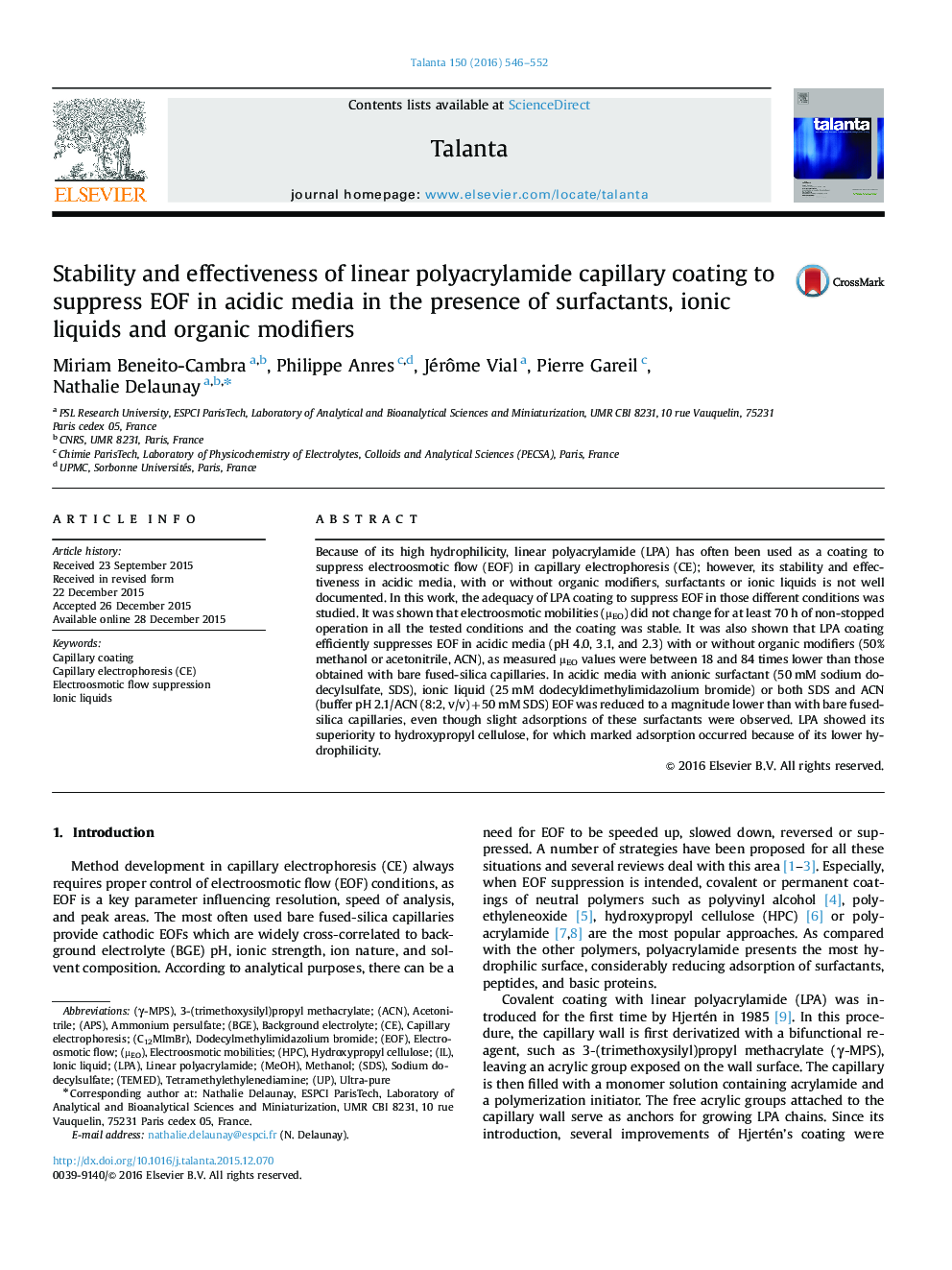| کد مقاله | کد نشریه | سال انتشار | مقاله انگلیسی | نسخه تمام متن |
|---|---|---|---|---|
| 1242205 | 1495785 | 2016 | 7 صفحه PDF | دانلود رایگان |

• Stable LPA capillary coating and efficient EOF suppression in acidic electrolytes.
• Efficient EOF suppression even with addition of SDS, CTAB, Ionic Liquid and solvent.
• No EOF change for 70 h of non-stopped use with all tested acidic electrolytes.
Because of its high hydrophilicity, linear polyacrylamide (LPA) has often been used as a coating to suppress electroosmotic flow (EOF) in capillary electrophoresis (CE); however, its stability and effectiveness in acidic media, with or without organic modifiers, surfactants or ionic liquids is not well documented. In this work, the adequacy of LPA coating to suppress EOF in those different conditions was studied. It was shown that electroosmotic mobilities (µEO) did not change for at least 70 h of non-stopped operation in all the tested conditions and the coating was stable. It was also shown that LPA coating efficiently suppresses EOF in acidic media (pH 4.0, 3.1, and 2.3) with or without organic modifiers (50% methanol or acetonitrile, ACN), as measured µEO values were between 18 and 84 times lower than those obtained with bare fused-silica capillaries. In acidic media with anionic surfactant (50 mM sodium dodecylsulfate, SDS), ionic liquid (25 mM dodecyldimethylimidazolium bromide) or both SDS and ACN (buffer pH 2.1/ACN (8:2, v/v)+50 mM SDS) EOF was reduced to a magnitude lower than with bare fused-silica capillaries, even though slight adsorptions of these surfactants were observed. LPA showed its superiority to hydroxypropyl cellulose, for which marked adsorption occurred because of its lower hydrophilicity.
Figure optionsDownload as PowerPoint slide
Journal: Talanta - Volume 150, 1 April 2016, Pages 546–552